The versatility of mobile applications has shown a dynamic growth in the coming years. The pandemic has changed the way we deal with the user’s health.
Health and fitness apps are developing in a variety of directions, covering the target audience. Additionally, COVID has triggered the large-scale usage of fitness apps.
The rise in the current fitness market trends in the industry such as the use of updated technologies can help enhance your brand.
If you are a journalist or a researcher looking for quality mobile fitness app statistics, then this blog will be helpful to you.
Along with this, if you are looking to enter the industry, these market insights will help you decide on all the essential parameters such as demographics, the interest of the users, and their current behavior patterns. This blog can be effective here.
Shall we start the journey?
Rise of Fitness Apps: An Overview
As the health and wellness market takes the stage, the fitness industry is experiencing a huge bang in personalized and innovative experiences.
People are no longer satisfied with the general approach. This is why they are seeking help with customized workout plans and activities that cater to their individual needs and goals.
As a result, fitness apps like Peloton, Nike Training Club, & Strava, etc., which have something different to offer are growing tremendously. They not only offer convenience but also offer high-quality and personalized workouts that one can do without leaving their home.
With amazing innovations and feature-rich solutions, the fitness industry has adapted to an even greater level of engagement and turned boring exercises into a fun and engaging experience. And that is why the industry is thriving.
Let’s look at compelling fitness app statistics that paint a picture of this amazing transformation.
Global Fitness App Market Size
- You see, the global fitness club market was valued at $98.14 billion in 2023 and is likely to reach $172.95 billion by 2028, growing at a CAGR of 12% during the given period.
- Fitness trackers are also not lagging and playing a crucial role in the evolution of the fitness industry. Adoption of fitness trackers has accelerated from $47.36 billion in 2022 to $53.94bn in 2023 and will see a rise of $182.90 billion by 2030.
- Coming to regions, Asia-Pacific is the fastest-growing region in the fitness industry, and that too because it’s driven by increasing health awareness and rising disposable income.
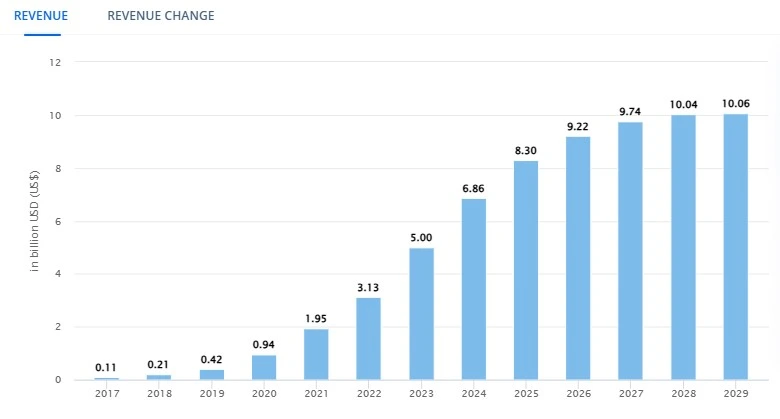
- The revenue in the fitness apps market is expected to reach US $6.86 billion in 2024. Additionally, this revenue is further expected to show an annual growth of 7.96%, resulting in a projected market of US $10.06 billion by 2029.
- As per Gitnux, 56% of users now access fitness apps 10+ times each week. Post-pandemic, these apps were downloaded 46% more than usual.
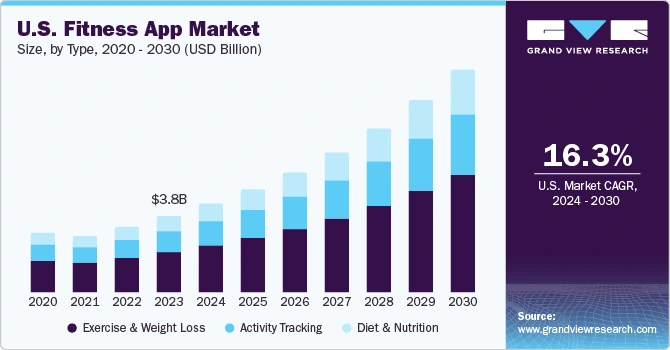
- The fitness app market size was valued at USD 9.23 billion in 2023, it is expected to grow at a CAGR of 14.8% from 2024 to 2030.
After learning about the global fitness market apps and revenue considerations, it’s important to continue with the demographics.
Let’s switch to the following section.
Demographics: Fitness App Market Statistics
To create a fitness app or to enter the market, it’s vital to know about the current usage and its demographics.
Here are some important stats related to the fitness app industry and its usage among men and women.
- Based on 2019 data, mobile health and fitness apps are used by 23% of consumers in the United States. Compared to health apps, workout apps and meditation apps have reached 36% of U.S. consumers.
- The number of adults aged between 20 and 64 is the largest gym-going demographic.
- Individually, the Nike Training Club app has 1.8 million active users, Similarly, Fitbit has over 500,000 monthly active users, MyFitnessPal has over 50 million active users, Minute Workout has over 30 million installs, and Sworkit has over 10 million downloads.
- Additionally, more women (64%) use health apps than men (46.8%).
- You can compare it to people aged 18-44 (46%), more people aged 60+ (74.5%), and more people aged 45-60 (57.6%) who have used the app during the pandemic.
- Women make up 60% of fitness app users and play a crucial role in the operation and development of these apps.
- A survey conducted in the United States in March 2017, it was found that 24% of female respondents utilize an app to track their fitness.
- Additionally, the global women’s activewear market was valued at $20.6 billion in 2022. It is further projected to grow at a CAGR of 21.6% from 2023 to 2032 and is reaching an estimated amount of $42 billion.
- 60% of fitness app users are women, and a significant proportion of them are millennials and Gen Z.
- Along with this, as of 2023, 35% of women and 34% of men in the United States, are the people who own a wearable fitness or wellness device including Fitbit, Garmin, or a smartwatch.
These were some of the proportions of fitness app market statistics which need to be considered. Now, let’s consider the stats of the top fitness apps and their related numbers in the following section.
Top Fitness Apps and Their Statistics
To understand the current market, it’s vital to evaluate famous fitness app statistics.
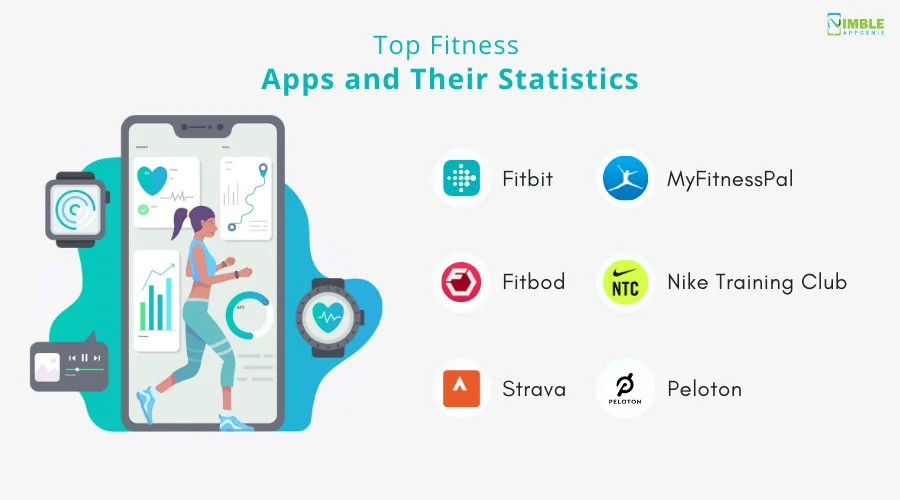
Here is the list of top fitness apps and their number of users.
1. Fitbit
Fitbit sold over 6.6 million units of its smart fitness devices in 2023. Here, the diet and nutrition app users reached 1.4 billion in 2022.
Additionally, 40.2% of Fitbit users are from the age group of 25-34 age group.
Currently, the app has a revenue of $1.04 billion in 2023. The active users of the app in 2023 were 38.5 million.
2. MyFitnessPal
MyFitnessPal has empowered over 200 million users in over 120 countries to enhance their health by tracking their food and recording their exercise activity.
The app generated $310 million in revenue in 2023, which is about a 25% year-on-year increase.
Along with this, the platform has recorded that it had 200 million users when it was sold by Under Armour to Francisco Partners.
3. Fitbod
There are over 10 million users have logged billions of exercises with the app. The Fitbod app has over 1 Million users.
Additionally, the app is effective in engaging users with its latest technologies. The app assists in setting fitness goals and helps users to track them with the right kind of exercise.
The app can help address the issues of the users, and thus, it has become the most used platform in the fitness industry.
4. Nike Training Club
Nike training club downloads count to 10 M+. These fitness app stats can be evaluated from the satisfaction level of the users with the platform.
The app is available in 19 languages within over 200 countries, and along with this, it has 1.8 million active users who are performing 500,000 workouts per week.
It is one of the important apps, where the users can identify useful exercises helpful to engage them in the long run.
5. Strava
Strava is one of the leading fitness app platforms for active people, with more than 125 million athletes in more than 190 countries.
The app connects millions of users with exercises and helps them achieve the aim of the project.
Here the users can find fitness plans based on their requirements and can connect with thousands of trainers more simply.
6. Peloton
The Peloton app has 1 million+ downloads and 14.1K reviews, representing the value and need for the platform in the market.
The fitness app market usage represents its boom in the current era and competitive landscape.
With the help of its latest features, the users can successfully connect with the app and their respective coaches.
Fitness App Usage as Per Region
Now, it’s time to learn about the use of fitness app statistics based on the region.
Here is the list of regions and demographics accordingly.
- The fitness app industry within the Asia-Pacific region is valued at $240 billion annually.
- The market size of the app in China amounts to $109.3 billion, whereas Japan’s fitness app market size is valued at $43.9 billion.
- South Korea amounts to $23.5 billion, India $13.4 billion, Taiwan $ 7.7 billion, and Indonesia $2.6 billion.
- In Europe, the revenue of the fitness app market is projected to reach US $1.611 million in 2024. Along with this, it displays an annual growth of 7.74%, which is projected to US $2,339 million by 2029.
- However, the fitness industry statistics in the United Kingdom are expected to project an annual growth rate of 14.83%, which can increase to US $725.80 million by 2029.
- Based on the statistics of 2019, mobile health and fitness apps are used by 23% of consumers within the United States, and this is expected to rise further in the coming years.
Fitness Equipment & Apparel Industry: Driving Growth
The global fitness equipment market will grow at a CAGR of 4.1% from 2021 to 2027. And, as for apparel $184.6 bn in 2020 and is likely to reach $257.1 bn by 2027, growing at a CAGR of 4.6% during this forecast period.
Taking these fitness market statistics forward, we will talk about two strong sectors that are fueling the market. Let’s start one by one; first, we will start with the Equipment market. And then move to the apparel market.
- The global exercise equipment market is experiencing a wave, showing an increase in revenue of $47 bn in 2024. This drive is expected to continue, with a CAGR of 6.22% from 2024 to 2028.
- Among other countries, China is leading the pack with the highest revenue and is likely to reach $12.96 billion in 2024.
- If we talk about the individual level, the average spending on equipment is $6.03 per person in 2024, showing people’s interest in health and well-being.
- Treadmills are one of the most popular fitness equipment categories. In 2020, treadmill sales in the United States reached 2.8 million units, with many people opting for treadmills for home workouts.
- According to a survey conducted by RunRepeat, home gym equipment sales increased by 1700% during the pandemic.
After laying the foundation of fitness statistics of the equipment market, let’s talk about the apparel market.
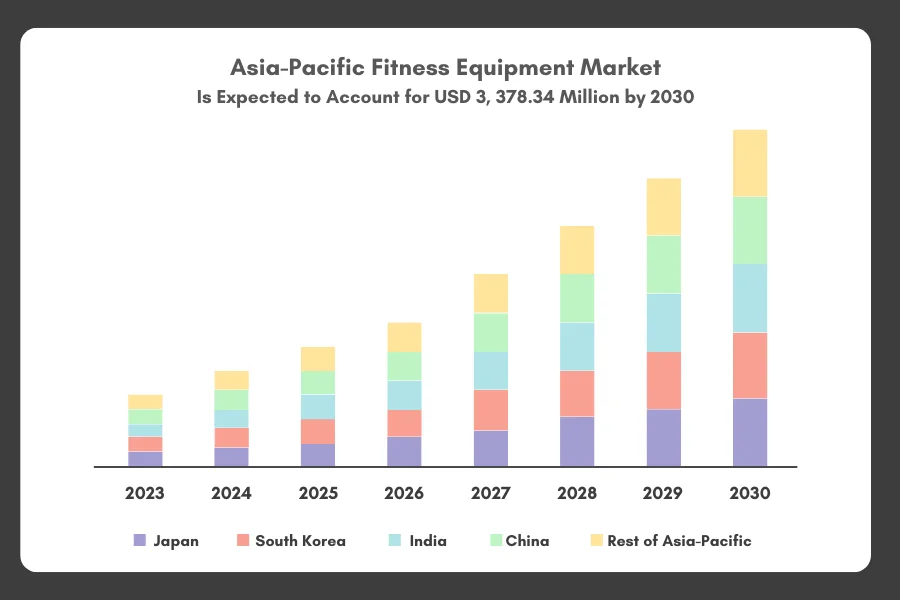
The gym apparel market is undergoing a transformation, and it is said that the market will see a surge of CAGR of 6.2%. This shows that the market will grow from $239.98 bn in 2024 to $438.47 bn by 2034.
Bothered about developing your app in such a competitive market? Connect with a trusted team of developers.
Partner with Nimble AppGenie to Build Your Next Fitness Project
Searching for the right company to connect with?
Nimble AppGenie is here to help. We are the best Fitness App Development Company, focused on delivering quality that will be useful for you to lead the market.
Our team is dedicated to delivering projects based on the current fitness app stats. The developers are knowledgeable and effective in enhancing your business productivity.
Conclusion
To create an outstanding app and enter the market, it’s important to evaluate the fitness industry statistics. The current fitness app market is valued at is valued at USD 9.23 billion in 2023, and is expected to grow by 14.8% from 2024 to 2030.
60% of females use fitness apps more than men. Additionally, the MyFitnessPal app has over 200 million users in 120 countries, while Fitbod has over 10 million users. This shows the growing market of fitness apps in the competitive market.
Along with this, it is essential to adopt the current trends of fitness as well as launch the application based on a diversified regions protocol.
Frequently Asked Questions

Niketan Sharma is the CTO of Nimble AppGenie, a prominent website and mobile app development company in the USA that is delivering excellence with a commitment to boosting business growth & maximizing customer satisfaction. He is a highly motivated individual who helps SMEs and startups grow in this dynamic market with the latest technology and innovation.
Table of Contents




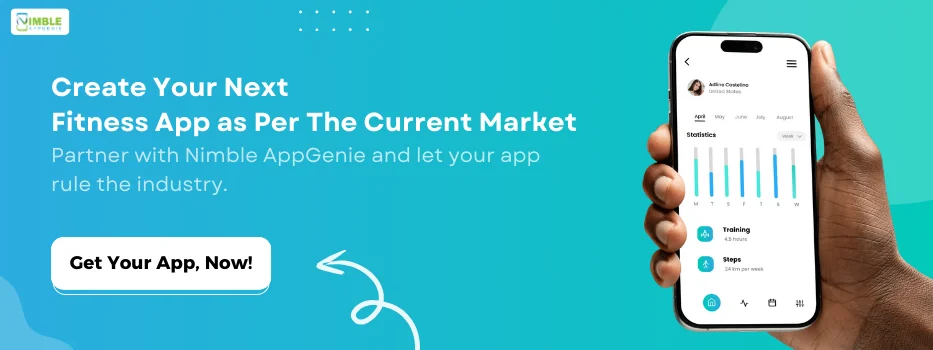
No Comments
Comments are closed.